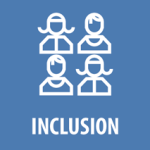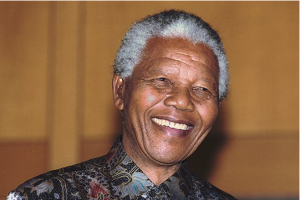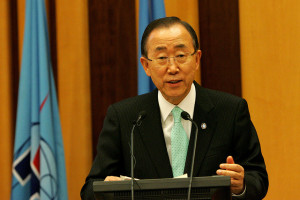Although 3 billion people worldwide were online and using the Internet by the end of 2014, at least 4.3 billion people were still not online, 90 per cent of whom live in the developing world. Mirian Teresita Palacios Ferreira, Chairperson of CONATEL, explains how she is working to address this digital divide in Paraguay.
Society is becoming more and more connected every day. Today, a housewife from a rural area in Paraguay is able to receive money through her mobile device from her son who works in Spain. Using the same device, she can pay her household utility bills without leaving the house. Her daughter can connect to a virtual learning platform and continue her studies after arriving home from work in the capital. Later, the whole family can have a video conference and stay connected as a unit, despite their geographic distance.
Yet in 2013, Internet penetration was only 36.9 per cent in Paraguay, meaning that the story above is not yet an option for most of the population.
Paraguay is well positioned to lay the necessary foundations so that everyone has the opportunity to enjoy the full range of possibilities that access to information and communication technology (ICT) brings; Paraguay is one of the fastest growing economies in South America, poverty has declined over the past decade, and there is universal access to free basic education.
But how do we build on this potential to turn Paraguay into a thriving digital economy?
This task was recently entrusted to me; as Chairperson of Comisión Nacional de Telecomunicaciones (CONATEL) it is my job to capitalize on the vital role that ICTs play in national development and bring ICT access to everyone in Paraguay.
I want everyone to benefit from the opportunities offered by Internet connectivity, and turn the scenario above into a reality for every family in Paraguay.
Bridge the digital divide and provide broadband for all by 2020
 Ensuring ICT inclusiveness requires moving beyond questions of access and affordability, to ensuring ICT accessibility for people with specific needs and enabling everyone to play a role in creating the ICT future they want. The Connect 2020 Inclusiveness Round Table held at ITU’s 2014 Plenipotentiary Conference explored the different dimensions of ICT inclusiveness, including digital inclusion for people with specific needs and using ICT to empower women and girls, youth and persons with disabilities.
Ensuring ICT inclusiveness requires moving beyond questions of access and affordability, to ensuring ICT accessibility for people with specific needs and enabling everyone to play a role in creating the ICT future they want. The Connect 2020 Inclusiveness Round Table held at ITU’s 2014 Plenipotentiary Conference explored the different dimensions of ICT inclusiveness, including digital inclusion for people with specific needs and using ICT to empower women and girls, youth and persons with disabilities.
Impact of a Connected Paraguay
Access to information and communication technologies (ICTs) is becoming ever more necessary as many aspects of our daily lives move online.
On an individual level, increased access to broadband connectivity will enable greater access to public services. Access to healthcare and education will be boosted through mHealth initiatives and online education platforms. Political participation and government transparency will benefit from e-government solutions, enabling citizens to receive public information quickly and easily.
Greater connectivity will also lead to more dynamic trade and private business activities which will drive national economic growth and benefit the whole country.
On the other hand, a more ‘connected’ Paraguay also gives us the opportunity to present our rich culture and traditions to the world – to showcase our art, our cuisine, our people. We can become a global source of knowledge, enriching the heritage of humanity.
ICTs: a powerful tool for human progress
Speaking via video link at the opening ceremony of ITU Telecom World 2009, Nelson Mandela underlined that “information and communication technologies are the single most powerful tool we have for human progress” and urged participants to “support efforts to connect the world and bridge the digital divide”.
Click here to watch some of the insights he has shared with us over the years.
Identifying the Challenge
However, bringing the benefits of today’s telecommunications system to everyone in Paraguay is a challenge, namely due to two inter-linked issues: affordability of technology and infrastructure.
Paraguay’s geography remains a significant barrier to high-speed, low cost Internet. As a landlocked country, we are dependent on neighbouring countries for access to the fibre-optic submarine cables which connect most of the world to the Internet.
This, in turn, drives costs up. A connection of 0.75 Mbit/s costs USD 21, which is 6 per cent of the average monthly income for a Paraguayan citizen. Subsequently, only 10 per cent of households have a fixed Internet service. Mobile broadband is an affordable alternative to fixed broadband plans, costing USD 11 – or 3.5 per cent an average monthly salary – for 500 MB. Consequently, 25 per cent of the population access the Internet through their mobile devices (19 per cent) or USB dongles (6 per cent).
Subsequently, Paraguay performed below average for both the Americas region and developing countries globally in ITU’s 2013 ICT Development Index (IDI) which measures national ICT access, use and skills. Paraguay had an IDI value of 3.71 compared to developing country average of 3.84 and the regional average of 4.86.
However, Paraguayans have an appetite to get online. The case is clear for us to strive to develop the infrastructure necessary to satisfy this desire of our population and enable national ICT growth.
Message from the UN Secretary General
“All people must be able to make the best use of information and communications technology to help create the future we want.” – United Nations Secretary General, Mr Ban Ki-moon, speaking at World Telecommunication and Information Society Day (WTISD) 2012. Read his full speech here.
Connecting Paraguay
Over the years, CONATEL has launched a number of initiatives to bring connectivity to Paraguay focusing on a multi-stakeholder approach, working with other agencies or institutions of central, regional and municipal governments.
In 2007, CONTAEL liberalized the terrestrial international internet connection which resulted in a 715 per cent increase in average peak Internet speeds from 2007 to 2011.
Other such initiatives are working to find alternative solutions to work around our geography as a landlocked country, identifying routes to connect to the international optical fibre networks running under our world’s oceans. We are currently exploring links to the Atlantic via Argentina and Brazil and the Pacific via Bolivia and Peru, which will drive down the cost of broadband plans.
Moreover, the 2011-2015 National Plan for Telecommunications (PNT), which maps the development of Broadband in Paraguay, focuses on the deployment of fibre optic backbone networks within Paraguay. Thanks to the subsidizing of private initiatives through the Universal Service Fund, we estimate that all 250 municipalities will have fibre optic lines by the end of 2015 which will vastly increase broadband access. Moreover, to build on the penetration of mobile broadband, CONATEL will soon begin the bidding process for 4G mobile broadband.
Funding from the Universal Service Fund has also helped to set up free WiFi in 50 public spaces across 36 municipalities at the end of 2014. In these areas, people can access key public services, contact their families, or complete their studies at no personal cost. By the end of this year, we will provide this service to another 70 public spaces in 60 municipalities. As this programme rolls out, we aim to bring the benefits of the Internet to the whole country.
Digital Divide Progress Report: 15 Year Review
“The ICT industry has experienced incredible growth over the past 15 years. In 2000, there were 400 million global Internet users; today there are 3.2 billion. There are more than 7 billion mobile cellular subscriptions worldwide today, up from 738 million in 2000. (…)These new figures not only show the rapid technological progress made to date, but also help us to identify those being left behind in the rapidly evolving digital economy, as well as areas where ICT investment is needed most.” Excerpt from ITU Blog, Digital Divide Progress Report: 15 Year Review. Read the full blog here.
The Next Generation
Young people are key to closing the digital divide in Paraguay. They are avid consumers of ICTs; ITU’s 2013 Measuring the Information Society Report noted a youth Internet penetration rate of 53.9 per cent in Paraguay. Furthermore, 19.5 per cent of the total youth in Paraguay are digital natives, meaning that they have five or more years of experience online. We must now build on this and empower the next generation to become a driving force for ICT growth in Paraguay.
At present, CONATEL in coordination with other institutions such as the Secretaría Nacional de Tecnologías de la Información y la Comunicación (SENATICs), is preparing to implement the 2016-2020 National Broadband Plan. A key focus will be on boosting young people’s ICT education and training to provide greater opportunities to access a first job and develop their talents. Additionally, the Universal Service Fund has subsidized connectivity to 123 educational institutions and centres run by the Ministry of Education and Culture, corresponding to 28 municipalities in various parts of the country.
Providing broadband connectivity in public spaces and educational institutions, complemented by a better ICT education, will lay the foundations for youth to interact with each other and their communities and allow them to fully exercise their citizenship. This, in turn, will ensure that they have the capacity and ability to reap the benefits of a global digital economy.
Trends in Telecommunication Reform Report 2015
Learn more about the Trends in Telecommunication Reform Report 2015 here.
In an era where the rapidly evolving ICT sector increasingly permeates all aspects of society, we cannot afford to maintain our position on the ‘wrong side’ of the digital divide. Increasing ICT access and affordability is vital for both the quality of life for my fellow citizens and Paraguay’s place in the digital economy.
This will take time, internationally coordinated efforts, and patience. As Chairperson of CONATEL and a citizen of Paraguay, I am ready to take on this challenge.




